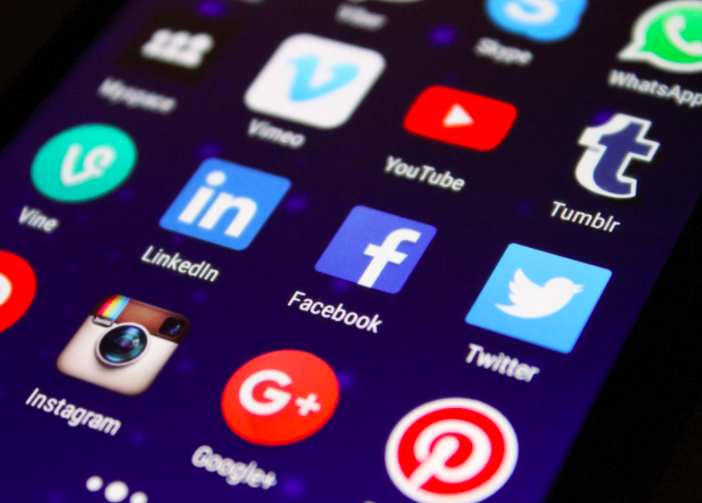Well-informed citizens are important for the preservation of democracy. So much so, the Founding Fathers protected the press in the First Amendment. Since even before the foundation of the United States, people have been using the press, media, and journalism to inform and influence others. Journalism has seen many changes since then. One change involves the polarization of news stories. Since journalists sell stories, many sensationalize and polarize their writing to address target audiences with specific political ideologies. Everybody, journalists included, has a personal, unique bias. Bias typically has a negative connotation, but it isn’t inherently bad. It is impossible to get rid of bias Therefore, it is impossible for journalists to write completely unbiased stories. So perhaps the problem isn’t in the bias; the problem in is the polarization.
The Pew Research Center for the People and the Press published a new study on June 12, 2014. They showed that the gap between Democrats and Republicans is widening. One of the graphs showed the numbers of voters who vote consistently Democratic or consistently Republican. The gap between the two groups is wider than it has ever been before. Perhaps part of the reason for this shift is the polarization of news.
Many news organizations, especially in broadcast journalism, are labeled by ideology: Fox is conservative, CNN and MSNBC are liberal, and so on. Consumers often have certain sources they like to get news from and certain sources that they refuse to consider. This is a problem because consumers often get only one side of the story.
To address this problem, governments, news organizations, individuals, and third party observers have begun practices to try to help inform citizens about both sides of the story as effectively and ethically as possible.
The US has a very unique situation. On one hand, the First Amendment protects free speech and free press. Many would interpret that to mean that published news, both written and broadcasted, should be uncensored and unregulated. However, for many years there were certain (although not always enforced) regulations set upon broadcast journalism. The 1949 Fairness Doctrine set certain standards and regulations on broadcasters in order to provide a more diverse look at the issues. There were two important parts of this legislation. The first was the requirement to provide coverage on pressing issues that were important to the public. The second part required broadcasters to present contrasting views regarding those matters. The Fairness Doctrine was very controversial as many considered it to be an infringement on the First Amendment, which eventually led to its repeal in 1987 by President Reagan.
Public broadcasting remains a powerful tool to reflect and influence public opinion. The UK has put certain restrictions on broadcasters to ensure fair reporting. Former BBC correspondent Kathy Harvey explained that the BBC trains their reporters to seek to alternate opinions. She also explained that the BBC keeps certain standards in order to reflect public opinion rather than trying to affect it. They also have an equal-time policy which ensures that balanced opportunities are given to different candidates, controversial laws and topics, and various viewpoints.
People generally claim to have a sense for the ideologies of specific news organizations: Fox is for Republicans and CNN or MSNBC is for Democrats. While this may be true to some degree, it is important to understand some statistics. According to CBSNews, when it comes to surveying about most reliable (or least polarized) sources, it “depends who you ask.” Thirty-two percent of the group surveyed said that CNN was reliable and twenty-nine percent said Fox News was reliable. But, 46 percent of Democrats said CNN was reliable. Fifty percent who said Fox was reliable were Republicans.
Neither CNN nor Fox News’s websites come out explicitly and say anything about their polarized labels. The websites explain the organization’s motives and methods instead.
CNN’s website has an “About Us” link in which they explain their purpose. According to this content, 4,000 global news professionals currently work for CNN. There is another link to full biographies on CNN’s anchors, reporters, correspondents, and executives. They appear to have gender and race diversity. Furthermore, CNN is open about who works for them. Although the individuals’ ideologies aren’t given, readers have easy access to a summary of who they are as people.
Fox News’s website is not so user friendly. The site has an “About” section, but it has many subcategories underneath. There is no easy way to find out how many people work for them and biographies from the site, like CNN. However, according to Wikipedia’s list of journalists, Fox appears to have a gender variety.
In 2008, the Pew Research Journalism Project conducted an experiment. They surveyed Americans, asking individuals what journalist they admired most. Jon Steward, host of The Daily Show on Comedy Central, ranked fourth. The comedian ranked alongside Brian Williams, Tom Brokaw, Dan Rather, and Anderson Cooper. The Daily Show, the study showed, is viewed as much as some other major news programs. Does this make Stewart a journalist? In his show, he has a clear bias. The study was conducted during the Bush Administration and it said that Republicans often bore the most ridicule. In addition, the program mainly focused on political stories and ignored other news worthy events. Does this lack of moderation make Steward less responsible?
Stewart has a clear bias, but when challenged about it, he points out simply that he is a comedian, not a journalist. He does not have the same responsibilities. Since he isn’t a journalist (and he argues that viewers should not see him as such), he should be able to say whatever he wants about whatever event he chooses. From the beginning, Stewart has said his purpose is to entertain; the show is on Comedy Central. Still, The Daily Show is very informative. While it has been highly successful because it is so entertaining, it is important for viewers to consider other sources as well. In fact, most people who watch The Daily Show also consume other forms of news and these individuals are highly informed. According to the study, regular viewers of the Daily Show are mostly likely to have among the highest scores in knowledge of current events.
The question remains, however, as to what journalists’ responsibilities are.
One journalist seemed to have it right. It was said that the retirement of former CNN principal anchor, Bernard Shaw, started CNN’s slope towards becoming more polarized. Why him? What did Shaw get right in the world of journalism?
Shaw had a reputation for “upholding unfaltering journalistic ethics.” He was professional which helped him get important and impressive interviews with world leaders including an interview with Saddam Hussein. Shaw also was known for his live coverage of Operation Desert Storm. He served as a U.S. Marine for four years, which gave him some credibility in covering war. Shaw also had a strong reputation for asking difficult, but fair questions.
What else made Shaw a good journalist?
Some assumptions about him as a person and as a reporter can be made. He must have been trustworthy because he was able to book interviews with world leaders. He asked thought-provoking questions. He was dedicated. He knew what he was talking about and he was honest about what he believed.
Third-party observers have noticed the polarization in news organizations and have tried to bridge the ever-widening gap between Republican and Democrat. One of the third-party organizations is FAIR (Fairness and Accuracy in Reporting). This organization focuses on criticism and critiques of media bias and offers standards and suggestions to ensure more fair and diverse media coverage. They advocate for more variety in the press, and a focus on minority views. They also provide many resources to studies done on the topic of media bias and real life examples of these problems. They encourage people to be activists about their news, to seek out different viewpoints and be more responsible consumers.
Much of the news today revolves around politics. Controversy drives many news sites, broadcasters, and newspapers to exaggerate, or incorrectly report news in order to sell to a niche audience that continues to grow more and more extreme. Another third- party resource for finding more true information specifically addresses the political sphere. This website is called RealClearPolitics and it was founded in 2000 by two conservatives, and while many have critiqued the site for being conservatively biased, it does provide a fast and efficient way to disseminate news stories to an audience that doesn’t want just exaggerated, extreme, and incorrect news. It works to provide different viewpoints and get information quickly and accurately to consumers.
Perhaps part of the problem also lies with the readers and viewers. Perhaps consumers have a responsibility too. Consumers should make judgments as to whether the news they view is based on good, fair, and accurate reporting. One way that consumers can do this is by focusing on the sources found in the news piece. Does it only consult politicians? Does it include minority voices? Another way is to look at diversity. The news should reflect those it influences, not just those who are in power. A third way consumers could help would be to make sure there is not a double standard involved in the news. They should ask: Does the story judge all parties fairly? Fourth, consumers should realize what kind of stereotypes are involved and make sure that the assumptions are not made because of generalizations. Fifth, consumers should question if the news piece uses loaded language to exaggerate, embellish, or enrage? Do they overuse buzzwords in order to generate as much hype as possible? Another way is to make sure the information is given in context. All of these standards will help create a rubric for judging news stories, and provide help in critiquing and analyzing the news to make sure that the reporting is responsible. Not only are reporters responsible, but consumers also have a duty to make sure to notice and acknowledge the polarization of the media in America, and to demand reliable and responsible reporting practices.





